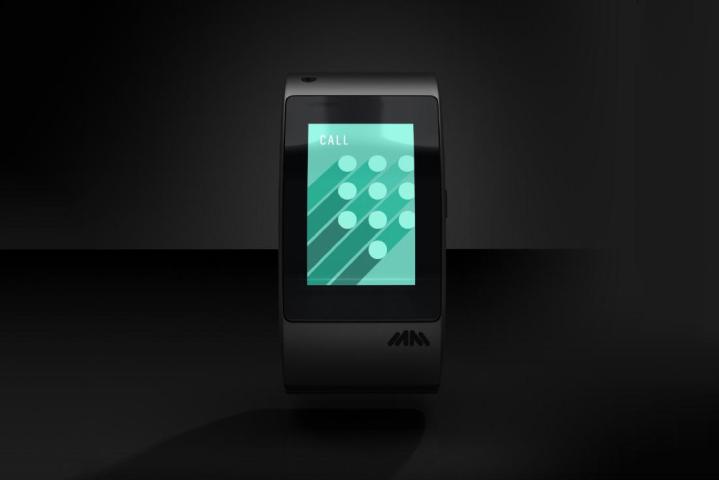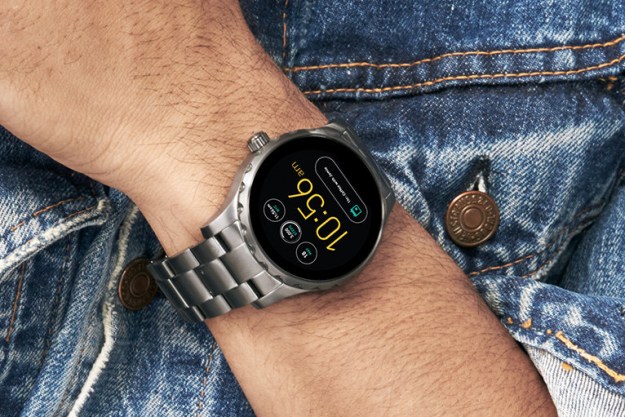
Namely, most of them are still worthless with a smartphone.
Details about the PULS are unsurprisingly spotty at the moment. We know you can DJ with it and we know it can make calls — as you would hope for a device that appears to weigh roughly the same as a Grammy statuette. In fact, the Intel director of creative innovation turned seller of $455 iPhone cases blames his company’s on-going conversations with AT&T on the fact that the PULS has yet to receive a firm — or even vague — launch date.
Actually, you’re going to need to carry around an iPhone, too.
One was audibly excited about the potential such a device afforded him to not be tethered to his his smartphone. For the first time in years, he could actually leave his home without his
If I was a more vigilant tech journalist, I would have corrected him, but I didn’t want to be that guy. “Actually, you’re going to need to carry around an iPhone, too.” It’s still not entirely clear how much of a slave the Apple Watch is going to be to other iOS devices at the moment, but it seems pretty clear that you’re going to need to carry one around with you to make the most out of the wearable.
This brings us back to one of the arguments that has cropped up since the dawn of the smartwatch: At the end of the day, what good is a wearable that turns useless when it’s not tethered to another smart device? At the end of the day, aren’t all of these smart watches just a couple of sensors attached to another, smaller screen?
The answer, of course, is, “it depends.” Smartwatches aren’t for everyone, certainly. They’re pricey and their functionality is still relatively limited. Both of those points will change soon enough, but will manufacturers answer the problem of connectivity?
Will.I.am has answered the call (assuming, of course, that the PULS makes it to market). So, for that matter, has Samsung. In August, the company released the Gear S 3G, a rare smartwatch with its own cellular connectivity — great news for people lacking the pocket space to port a Galaxy Note around with them everywhere.
What good is a wearable that turns useless when it’s not tethered to another smart device?
Wireless connectivity will continue present a major hurdle as well. Breaking free of the smartphone will need to mean either ubiquitous Wi-Fi connectivity or a willingness to opt into another cellular plan. Given the rate at which Wi-Fi-only tablets tend to outpace their 3G/4G counterparts, that seems like a bit of a hard sell for most consumers.
Assuming that battery life continues to improve — as is the tendency — and that smartwatches do ever truly move from tech curiosity to mainstream consumer devices, smartwatch manufacturers are going to have to work a lot more closely with carriers to make always connected smartwatches a more appealing proposition for cash crunched consumers.
There are a few potential approaches to this model. Upfront carrier subsidies are a possibility. What if, like your smartphone, that fancy new Apple Watch only cost, say, $100, assuming you signed a two-year carrier contract? You can worry about the cumulative cost later, this is America, damn it!

Or, what if they came bundled with your phone? The additional cost would be a lot easier to stomach if it was an add-on to your existing plan, rather than a new plan in its own right. Carriers have tried all sorts of similar bundles with smartphones and tablets, but this makes even more sense, given how utterly dependent one product is on the other.
One thing seems for certain: The more prevalent smart wearables become, the more carriers are going to have to rethink their plans. As we look toward smartwatches and other devices capable of functioning without being tethered to other products, the revenue potential will continue to increase for carrier. But warming consumers up to even more monthly payments will require a light touch.
The future for wearables seems bright, so long as it doesn’t require an individual cellular plan for every part of the body. Friends, family and wrists seems a good place to start.


